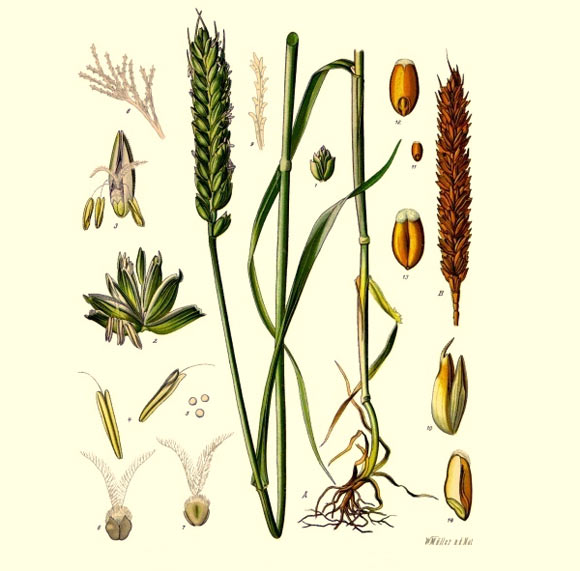Scientists from the International Wheat Genome Sequencing Consortium have published a draft sequence of the genome of the common wheat (Triticum aestivum).

The common wheat, Triticum aestivum. Image credit: Franz Eugen Köhler.
The common wheat is a major dietary component for many populations across the world.
Grown on more land than any other crop, more than 215 million hectares of wheat are harvested annually to generate a world production of almost 700 million tons, making it the third most produced cereal after maize and rice.
Wheat is the leading source of vegetable protein in human food, having a higher protein content than either maize or rice. The wheat plant is highly versatile due to its ability to grow in a wide range of environments. Wheat grain is easily stored and can be converted readily into flour for making numerous varieties of high quality edible food.
The draft genome sequence is an invaluable resource to plant science researchers and breeders.
“For the first time, they have at their disposal a set of tools enabling them to rapidly locate specific genes on individual wheat chromosomes throughout the genome,” said Dr Eduard Akhunov of Kansas State University.
The results are published in four papers in the journal Science.
Although a draft, the sequence provides new insight into the plant’s structure, organization, evolution and genetic complexity.
“The wheat genome only has 21 chromosomes, but each chromosome is very big and therefore quite complicated,” Dr Akhunov said.
The team also sequenced the largest chromosome in the common wheat, the chromosome 3B.
“The largest chromosome, 3B, has nearly 800 million letters in its genetic code. This is nearly three times more information than is in the entire rice genome. So trying to sequence this chromosome – and this genome – end-to-end is an extremely complicated task,” Dr Akhunov said.
In order to analyze the vast amount of genetic information, the researchers used a technique called shotgun sequencing. This divided the wheat genome into chromosomes and then split each chromosome into smaller segments.
Chromosomal segments were analyzed by short gene sequences and overlapping sequences were stitched together with computer software.
“The chromosome-based daft sequence the critical step before the full wheat genome is sequenced. The sequencing approach developed for the 3B chromosome can now be applied for sequencing the remaining chromosomes in wheat,” Dr Akhunov said.
Dr Catherine Feuillet, who is a co-chair of the International Wheat Genome Sequencing Consortium, added: “with the draft gene sequence for each of the bread wheat chromosome and the first reference sequence of chromosome 3B, we have reached a great milestone in our roadmap.”
As of today, the researchers estimate the full genome sequence will be available in three years.
“We know now the way forward to obtain a reference sequence for the 20 remaining chromosomes and we hopefully will be able to find the resources to achieve this in the next three years,” Dr Feuillet said.
_____







